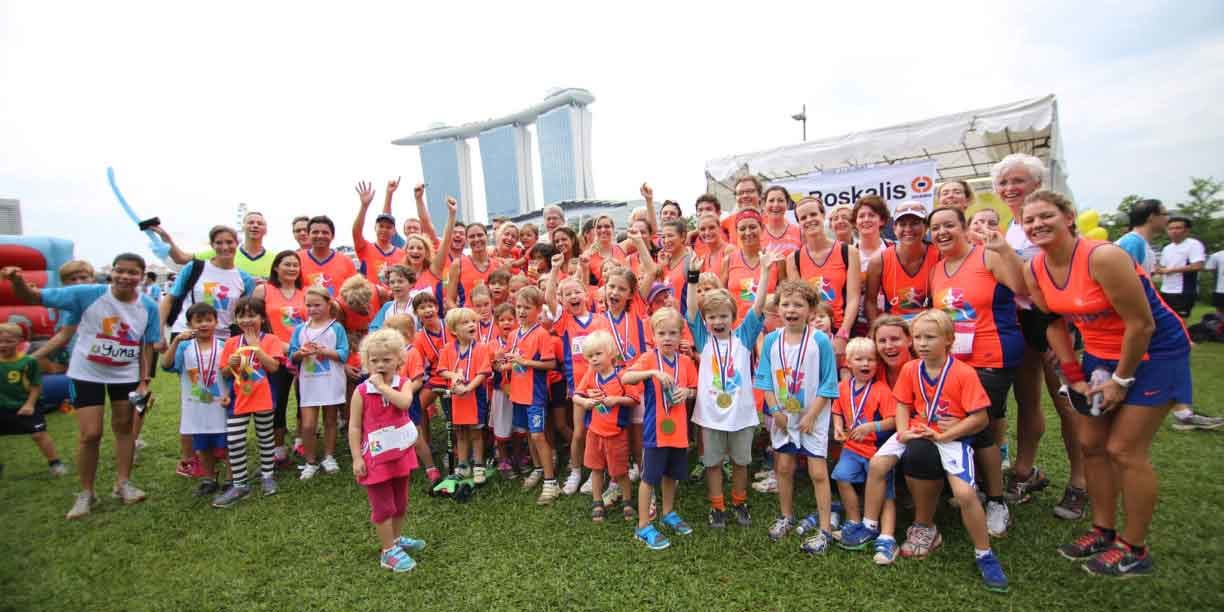Why a Charity Run/Walk Might Be Your Most Successful Event of the Year

As the temperatures rise, nonprofits are switching into high gear for the run/walk season. This type of fundraiser has remained popular and successful over the years, and the psychology behind it is nothing short of intriguing.
People are more willing to get involved in the 5K because it’s painful.
Unlike other giving experiences that are easy or pleasant, this activity-driven event attracts support because people are drawn to the challenge of working hard and undergoing pain on behalf of a cause. Accordingly, organizations must take the necessary steps to maximize the broad support they get from these popular events.
Outcome-Driven vs. Activity-Driven
Typically, campaigns fall under one of two types of themes: outcome-driven and activity-driven. In outcome-driven campaigns, your specific campaign goal—whether it’s 10 schools in Uganda, or 100 hot meals—provides the framework for all of your messaging. Your website, appeals, and fundraising pages draw people in by giving them a tangible image of what they attain together.
On the flip side, in an activity-driven campaign, your messaging is focused around an engaging activity. You rally support by asking people to partake in an activity, which can often be a difficult or exciting challenge—like dumping a bucket of ice on your head or running a marathon. The popular run/walk falls under this category.
These fun, and sometimes physically tough activities are excellent ways to energize people and get them involved. Not only do fundraisers get fired up about taking on a particular challenge, but when they do, it can also excite and motivate prospective donors to give.
But don’t just take our word for it. Research seems to agree.
The Psychology Behind Painful Fundraisers
Researchers have found that a rigorous fundraising challenge can attract support. In a series of five experiments, Christopher Olivola of Carnegie Mellon University discovered that people are inclined to contribute more when the experience is painful and labor-intensive.
According to the “martyrdom effect,” the prospect of enduring pain to advance a valued cause also makes people more willing to participate in the activity. The idea of suffering for a cause they care about can help make their support feel more meaningful. This can speak to why challenging fundraising activities, like 5K runs, have consistently drawn in participants.
The Appeal of Charity Run/Walks
These findings present a promising opportunity for activity-driven fundraisers, especially as run/walk season approaches. Because supporters seem to enjoy the prospect of pain, the sweaty, strenuous challenge of running a 5K can inspire people and attract a ton of support.
Given the popularity of these fundraisers, nonprofits must be ready to maximize both participation in and contributions from the event. Many organizations have traditionally charged a flat fee to enter an event, but this method can leave support on the table. There’s an alternative method that can boost your fundraising success: implementing peer-to-peer fundraising into your run/walk.
The Power of Registration and Fundraising
With the right fundraising software, you can use the combined registration and fundraising option to turn your run/walk participants into fundraisers.
When a person registers for your event, Classy automatically creates a fundraising page for them. The participant can then start tapping into their own network for donations, which can help bring a lot more money, and new donors, compared with a flat entrance fee.
To illustrate, our platform data shows that the average active fundraiser will raise $568 from seven donors. The ability to raise money gives participants’ friends and family the chance to donate to personal fundraising pages, which in turn boosts your nonprofit’s overall fundraising results. Classy’s registration and fundraising pages (both individual fundraising pages and the event registration pages) have a 62 percent conversion rate.
Not only can combined registration and fundraising draw on potential donors’ willingness to give, but it can also maximize your fundraisers’ excitement for and involvement in the event. According to the martyrdom effect, a fundraiser becomes more invested in their activity when it’s painful, so a person running a 5K can be extra motivated to hit their campaign goals. On top of putting in some serious training, participants might be more excited to share their fundraising pages, spread the word to their networks, and even make generous donations to their own campaigns to show their dedication.
Your charity run/walk has a special opportunity to drum up excitement and rally support around your cause. Potential donors get pumped up to see participants brave a challenge, and participants are primed to go the distance for the causes they care about. Take advantage of this natural energy by implementing peer-to-peer, and you can stretch your fundraising potential to new heights.
Plan a Charity Run/Walk Like a Pro
Photo credit: flickr user RunSociety
Subscribe to the Classy Blog
Get the latest fundraising tips, trends, and ideas in your inbox.
Thank you for subscribing
You signed up for emails from Classy
Request a demo
Learn how top nonprofits use Classy to power their fundraising.




